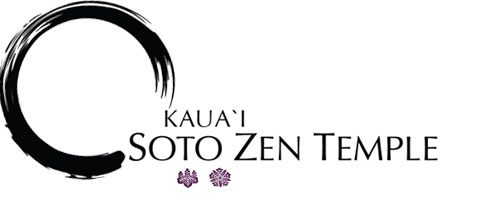The Zenshuji temple on Kaua’i had its beginnings when McBryde Sugar Company was expanding. Many villages, called camps, were established to house the imported plantation laborers. In the fall of 1899, a group of recent Japanese immigrants were assigned to McBryde and settled at Wahiawa, Camp 3.
The lack of a social core made life difficult for the camp residents until the Reverend Ryoun Kan arrived in 1903, initiating a change in people’s outlook of settling in a new place and forming a new community. Reverend Kan started preaching in a home, then used the community hall, and in 1904 built a combination church-language school. Finally in 1918, a main temple was built along with the minister’s residence.
The Wahiawa community thrived for decades as the Zenshuji temple was the center of all social, cultural, and religious activities for the camp’s Japanese American community. The demise of the sugar industry fostered the departure of many camp residents, so in 1978, a new temple, hall, and minister’s residence were built by church members in nearby Hanapepe town. The old bell tower of 1934 was carefully moved and restored 1979.
In 1985, the year of the 100th anniversary of Japanese Immigration to Hawai’i, a large reunion was held for the Wahiawa Camp 3 residents, drawing over 700 people. A final tribute was held at the original temple, before it was demolished at the old plantation camp. This event made the CBS morning news with Maria Shriver, and headlined a page in the Los Angeles Times. Then, Senator Daniel Inouye, Governor George Ariyoshi, and Mayor Tony Kunimura attended the event. Senator Spark Matsunaga was unable to attend the reunion.
Many of Hawaii’s prominent Japanese-Americans were descendants of plantation immigrant workers. Senator Inouye’s grandparents came to work at McBryde that fall of 1899 and settled at Camp 2, with Dan’s father, Hyotaro, who was 4 years old. The family later moved to Honolulu.
Senator Spark Matsunaga was born in Kukui’ula, McBryde Sugar Plantation’s Camp 18. His family eventually moved a few miles west, to Hanapepe town. Mayor Kunimura was born in New Mill camp, a cluster of homes two hundred yards from Grove Farm’s sugar mill in Koloa.
Today, with other social, cultural, and demographic changes in the community, and with no minister, the church is facing many challenges. The temple is currently managed and run by a Board of Directors.
However, the temple still stands majestically along the main highway, proud of its past and confident of its future.
